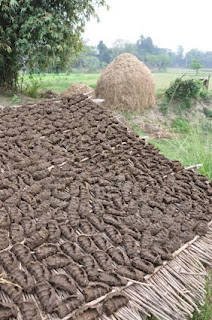 I made a journey outside of Dahka today to see examples of some other metalworking I had come across in my research.r
I made a journey outside of Dahka today to see examples of some other metalworking I had come across in my research.r


 Along the way men and women were attending their fields of rice, planting out and watering using baskets and ropes.
Along the way men and women were attending their fields of rice, planting out and watering using baskets and ropes.
I liked the visual pattern of the rice against the sheet of water and the reflection of the sky. the raised lines of earth that divided the fields forming tracks and paths.











 Materials and crops were stored and drying along the way. These are stacks of jute.
Materials and crops were stored and drying along the way. These are stacks of jute.

 A rice harvest, drying in the sun.
A rice harvest, drying in the sun.


